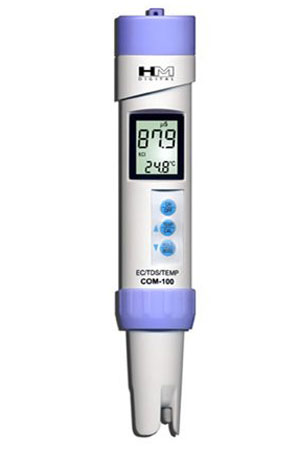Generally the total dissolved solids in pool water are always rising. TDS is the measure of the total amount of the soluble substances that are dissolved in the water. The including soluble substances are calcium, manganese, sodium, copper, iron, other trace metals, chlorides, sulfates, rubber ducks, swimmer waste, every bit of dissolved dust, pollen, total alkalinity, conditioner, and all chemical treatment. Usually, low TDS levels are present in soft water. It can be measured by TDS test meter.
| Table of Contents: |
Pool TDS factors
The total dissolved solids in pool water can be affected in many ways. All the chemicals that we are added to balance pool water are increased the TDS level such as chlorine, pH increaser or reducer, algaecide, alkalinity, water hardness increaser or reducer, shock, clarifiers etc. Pool TDS may introduce by swimmers with the help of sweat, perfume, deodorant, hairspray and others substances that are coming from their bodies. Evaporation can also increase the TDS level. Water is evaporated from the swimming pool as pure level by leaving behind the dissolved solids. To maintaining pool water level fresh water are added which is containing certain amount of TDS. Therefore, it increases the total dissolved solids. Moreover, all things such as dust, dirt, animal wastes that are carried by the wind or rain into the pool water also contribute to TDS level.
Pool TDS Level
According to EPA water standards the maximum acceptable level of distilled or pure water is 0 ppm and for drinking water is 500 ppm. There are various opinions about the maximum tolerable level of TDS for swimming pool water. By consideration all opinions the maximum acceptable level is 1,500-2000 ppm. Conversely the minimum acceptable level is 300 ppm. The TDS level is not main issue; the main subject is what type of the solids that are dissolved. Therefore some pool can operate without problems at higher ppm.
How to Test TDS
There are two methods to test the total dissolved solids in pool water. The most common and accurate method is TDS test meter. This method is working basis on conductivity. To maintain accuracy this device needs calibration. The other test method is TDS test strip method which is inexpensive and less accurate. It is very simple method; anyone can determine the pool TDS level with the help of color chart. It is suggested to test the TDS twice per month during summer months due to high evaporation rate. During others season, it is enough to test at least once per month. If you are facing with TDS problems you can test more frequently. There is no exact time of day to test it.

HM Digital COM-100 Waterproof Combo Meter for EC, TDS and Temperature, 1-Pack
Problems of High TDS
High TDS can lead to many problems such as cloudy pool water, stains on tile and plaster, scaling, hard water, salt taste and trouble to keep chlorine level. In fact sometimes excess of TDS, have no influence without on clarity. Reason, all solids will not create problems. The problematic dissolved solids are nitrates, phosphates, sulfates, chlorides and ammonia whereas calcium and some other salt are actually good TDS.
If the bad TDS level increases then it can decrease the effectiveness of chlorine. Moreover, it can irritate the skin and eye of swimmers. If the total dissolved solids in pool water is for higher levels of phosphates and nitrates then it can consume more chlorine and supply nutrients to algae. Therefore it will be allowing algae to bloom simply.
At higher pool TDS, sometimes; the pool water may detect an unpleasant salty taste. Reason, we use many sodium containing chemicals for pool maintenance such as sodium carbonate, sodium bicarbonate, sodium hypochlorite, sodium bisulfate. Due to increasing conductivity, at higher TDS level the metal corrosion of pool equipment may occur.
How to Fix TDS Problems in swimming Pool
There is no significant product to reduce the total dissolved solids in pool water. The most common and easiest solution is to drain a portion of pool water and fill up it with the fresh water. How amount of water should to be drain, it depends on the pool TDS level. It may be partially or totally. Always you have to concern about the fresh water TDS level. Moreover it will not affect significantly on your pool water balance. In one word, it will not affect the pH, alkalinity, chlorine level, hardness etc. A regular backwash will help you to prevent from raising the pool TDS too much. Although the common pool filters do not remove the dissolve materials.
TDS measurement only picks up ionic species. It would not pick up organics, some human waste and rubber ducks.
I have a fresh water swimming pool I would like to know the ideal TDS (min and max). Please advise